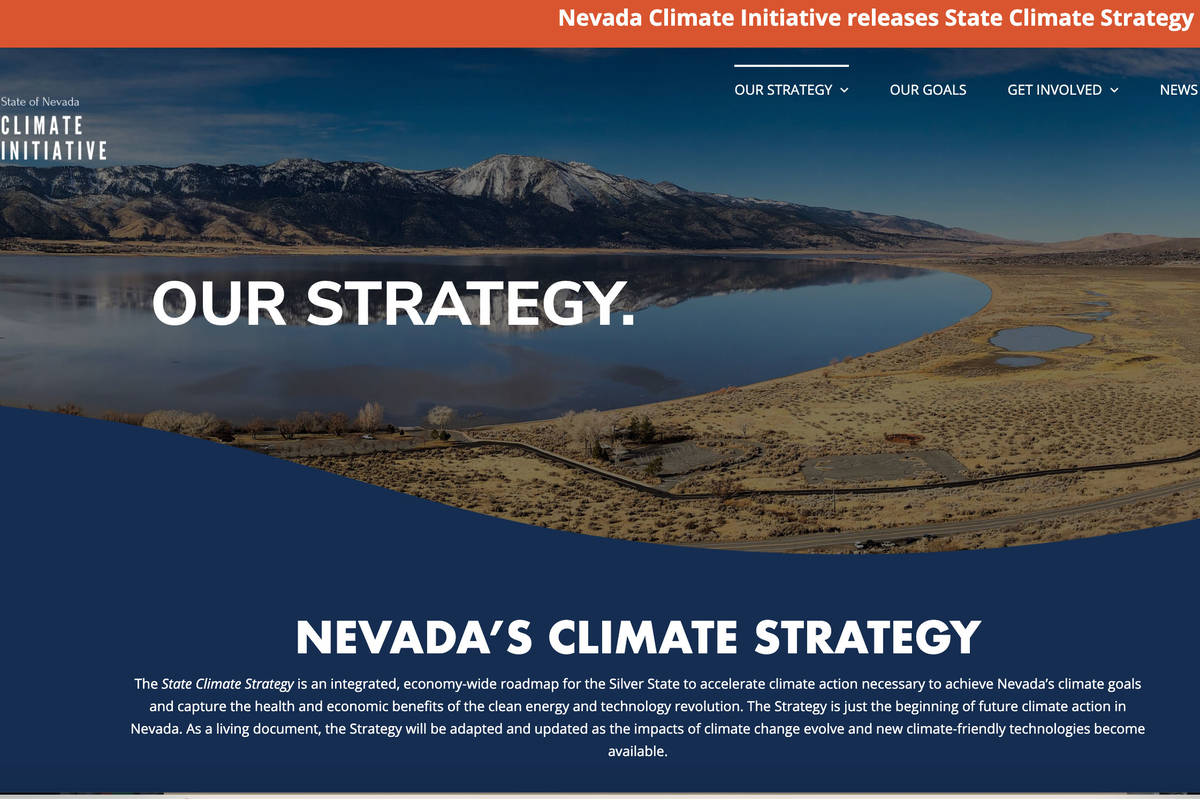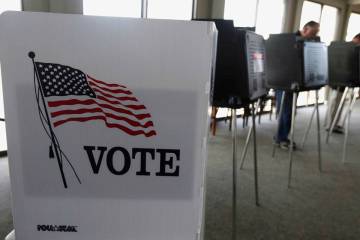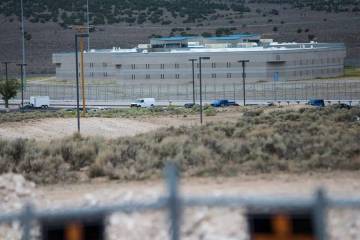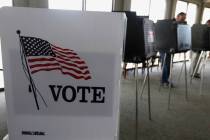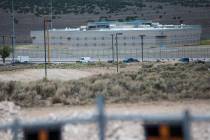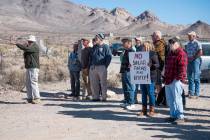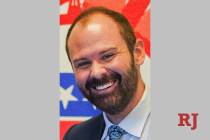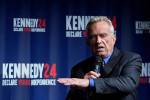Nevada climate blueprint proposes 17 policy changes to curb emissions
A long-term blueprint for guiding Nevada to net-zero greenhouse gas emissions by mid-century calls for the end of gas-powered heating and cooking in homes and businesses, buyback programs for high-polluting vehicles, and energy-efficient labeling for homes akin to how appliances are graded, among 17 specific policy recommendations.
The inaugural State Climate Strategy document, released Tuesday, is the outgrowth of a 2019 executive order from the governor seeking “specific policy and budget recommendations to reduce greenhouse gas emissions and mitigate the effects of climate change.” The document is a road map for how the state can meet goals to reduce emissions 28 percent below 2005 levels by 2025 and 45 percent below by 2030, and reach net-zero emissions by 2050.
A report last December by the state Division of Environmental Protection showed that the state is lagging on meeting those goals, potentially falling short of the 2025 target by 4 percentage points and the 2030 target by roughly 19 percentage points.
“If Nevada intends to achieve these critical climate goals, new and/or updated budget and policy priorities must be enacted in the very near term in order for consumers and businesses, local and tribal governments, and other impacted stakeholders to implement new climate-related policies within a timeframe consistent with Nevada’s GHG reduction goals,” state administrators wrote in presenting the document to the governor.
“This challenge is further compounded by the current budget/fiscal pressures in Nevada resulting from the COVID-19 pandemic. In fact, state agencies will likely struggle to maintain the current level of effort devoted to climate change under current and projected budget scenarios.”
‘Robust public input’
Despite limitations created by the pandemic, the plan’s developers “received robust public input” via nine virtual listening sessions on a range of climate topics and received 1,500 survey responses. More than 75 percent of the respondents said they were “very concerned” about climate change, citing drought, wildfire, air quality and extreme heat among their biggest worries.
If the state meets its targets, Nevada could prevent between $172 million and $786 million in economic damage from such climate change effects by 2030, and up to $4 billion by 2050, according to the strategy document.
Besides metrics on emissions-reduction potential and feasibility, the 17 mitigation policies outlined in the report cover climate justice and economic issues. It notes that “low-income communities, people of color, and indigenous populations have disproportionately borne the burden of the impacts of climate change,” and that action on climate and economic development “are intrinsically linked and can be strategically integrated to achieve their respective goals.”
The policy menu and recommendations are organized by industry:
Transportation: Adopt standards for low- and zero-emissions vehicles and low-carbon fuel, implement programs for clean trucks and a “Cash for Clunkers” rebate for higher-polluting vehicles, and curtail emissions loopholes for classic cars.
Electricity: Transition from fossil-fueled to clean energy electricity generation, require that greenhouse gas reduction plans prioritize decarbonization in long-term resource planning by utilities, and prioritize energy efficiency and demand response programs.
Industry: Replace, capture and recycle ozone-depleting substance substitutes, such as hydrofluorocarbons, which are potent greenhouse gases.
Residential/commercial: Adopt appliance and equipment efficiency standards and energy codes for net-zero buildings, implement a statewide energy benchmarking program, require residential energy labeling and audits for homes, expand financing programs for energy efficiency and renewable energy projects and the use of energy savings performance contracting that help public entities achieve sustainability goals, and end the use of natural gas for heating and cooking in homes and commercial buildings.
Land use: Establish a statewide urban forestry strategy to support local efforts in planting, growing and maintaining trees and community forests, which help mitigate climate impacts.
‘Critical framework’
The document “serves as the critical framework necessary to elevate climate action and foster a healthy, vibrant, climate-resilient future for all Nevadans – especially our most disadvantaged community members who live in the areas experiencing the greatest climate-related health and economic impacts,” Gov. Steve Sisolak said in a statement with the strategy’s release.
“As we continue our recovery from the COVID-19 pandemic, climate action must play a key role in rebuilding a stronger, more climate-friendly and equitable economy for Nevada. Put simply, we must build back stronger.”
Reaction from clean-air and environmental groups was supportive but measured, with one taking issue with the strategy document’s lack of specifics on environmental justice considerations.
In a statement, Shannon Proctor, executive director of the American Lung Association in Nevada, called it a “great step towards building a healthier, more sustainable future for all Nevadans.”
Nevada Conservation League Executive Director Paul Selberg said it showed “how seriously Governor Sisolak and his administration are taking the climate crisis.”
But the Nevada chapter of the Center for Biological Diversity, while crediting Sisolak for “political courage” in calling for phasing out natural gas as an energy source, said the strategy did little toward “democratizing energy production,” such as with programs to spur rooftop solar energy production.
“Nevadans want to generate electricity on our roofs, not in open and undisturbed desert ecosystems,” said state director Patrick Donnelly. The governor, he said, “has kicked the can down the road on ensuring that our renewable energy transition is primarily for the benefit of people.”
The group also faulted the document for not addressing economic disparities in urban planning. The urban heat island of Las Vegas, inhabited mostly by people of color, has seen average temperatures climb nearly six degrees since 1970, the group cited. Yet local governments are directing resources to “affluent sprawl developments in the desert” that will worsen emissions and climate change.
“Trees are great, but we need to address the systemic inequalities that directly and disproportionately affect urban centers,” Donnelly said.
The policy document will be continually updated over time.
Contact Capital Bureau reporter Bill Dentzer at bdentzer@reviewjournal.com. Follow @DentzerNews on Twitter.



